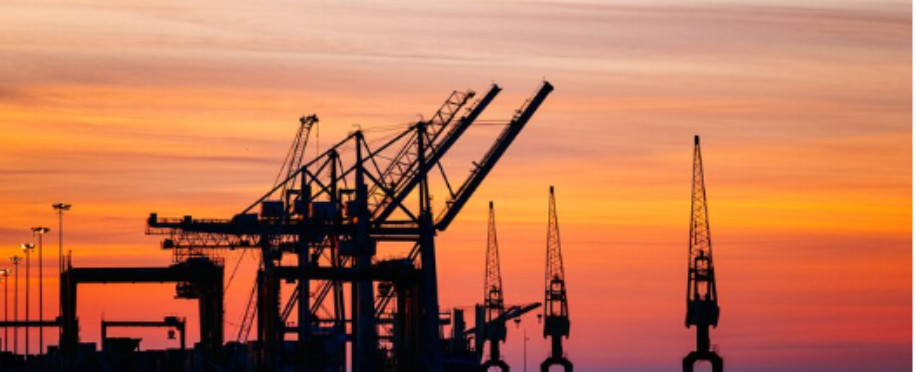Copyright © 2025 lmitac.com All Rights Reserved. Contact - Terms and Conditions - Privacy Policy - Quality Policy - Become an instructor - Vacancies - Sitemap
London Maritime Academy is a trade name for London Premier Groupversion: 2.9.0
London Maritime Academy is a trade name for London Premier Group

Posted on : 4/24/2024, 11:03:10 PM
Offshore construction has traditionally been the backbone of the marine sector, providing the offshore industry with the essential network necessary for its growth. Offshore construction technology, assisted by improvements in technology and engineering, has been the driving force behind the ability to overcome the hostile work environment.
This article illuminates the realities behind offshore construction, its significant benefits and techniques, and the need for specific training courses.
The process of offshore construction is not a bed of roses. Cargo transmission over long distances of the ocean is one of the hardest things because the sea is unforgiving, and the conditions are usually not predictable. Workers and machinery confront the everlasting elements of nature, like high-velocity wind currents, tough seas, and salty water.
Another point is that offshore construction sites are far and deep in the waters and are disconnected from the rest of the world. Therefore, items such as transportation, maintenance support, and logistics are more complicated than usual onshore structures. Needless to say, providing electricity or an energy source might be a hassle in offshore construction sites OCS that are located deep in the waters.
However, these difficulties should not deem offshore constructions less favourable; solutions exist for every problem. Offshore construction provides an opportunity to exploit the abundance of ocean resources, such as oil and gas, contributing to energy stability.
Moreover, offshore construction allows installation and management of offshore facilities, like a renewable energy platform, such as a wind farm, and, accordingly, lowers common dependence on fossil fuels and switches to more positive, environmental-friendly energy engineering methods that produce less carbon into the air, which contributes to the concept of sustainable ship design.
On the other hand, offshore construction would decrease the eco-impact on sensitive coastal areas since disturbing and losing these areas is minimal, so this construction would preserve those delicate ecosystems. Lastly, offshore construction operations employ people and boost the locals’ income in marine areas.
Offshore construction projects have been conducted for several years, and various techniques to make these projects successful have been continuously developed and refined. However, using updated technology marks a tremendous historical icon for marine life. Here, we will discuss a variety of the most innovative and reliable techniques in the industry:

These vessels have legs that can be lowered into the seabed, thus forming a stable and practical steel base for the production work to be carried out. Their structural design allows for platform elevation above water level, leading to a secure and wave-resistant work area, safeguarding workers and equipment from turbulent waves.
With the use of remotely operated ROVs and diving teams that install and maintain subsea infrastructure, this instrument consists of undersea infrastructures such as pipes and cables. ROVs with high-end cameras and robotic arms can accomplish complex tasks at ultra-depths, decreasing the number of participants in human divers and allowing for a higher level of safety.
These AI-powered systems let a ship move in the direction it is pointed in without being anchored and fix its position against wind, waves, and current. Vessels may manoeuvre using thrusters and geotechnical GPS technology, allowing them to operate with utmost precision in highly dynamic and complex offshore environments. These systems enhance the efficiency of construction operations.
It is quite common practice to prefabricate the modules ashore and then transport them to the actual construction site. Prefabrication helps to save time and reduce labour requirements. Those units are manufactured in standard sizes, which makes them as transportable as the blocks and interchangeable, and they can be assembled on-site afterwards.
Drones have completely changed how surveys and inspections are conducted in offshore construction areas. Fitted with high-definition automatic cameras and sensors, they can provide data and images of large areas quickly and efficiently. This saves the need for a time-consuming and costly manual inspection and improves surveying accuracy for pre-construction planning.
To perform successfully in offshore construction, you must enhance your expertise by attending marine engineering courses that teach you the most recent methods and best practices.
These training are normally based on subjects such as marine engineering, building structures suitable for offshore environments, project management applicable to offshore projects, and marine health and safety rules.
By attending these courses, professionals master the concepts and techniques that are the foundations of working in extensive and highly demanding industries. They receive thorough and detailed understanding from specialists and have the capabilities to perform well at a wide range of jobs in the maritime market.
They learn to combine modern methods and equipment in their projects and develop a complete understanding of the problems and risks present at the offshore structures.
Offshore construction has been a pioneering milestone in the history of the maritime industry, and its new technology has become a significant step towards success worldwide. So, if you're a company owner starting your new construction plan, consider what offshore construction offers. However, do it with help; take a course or consult a specialist.